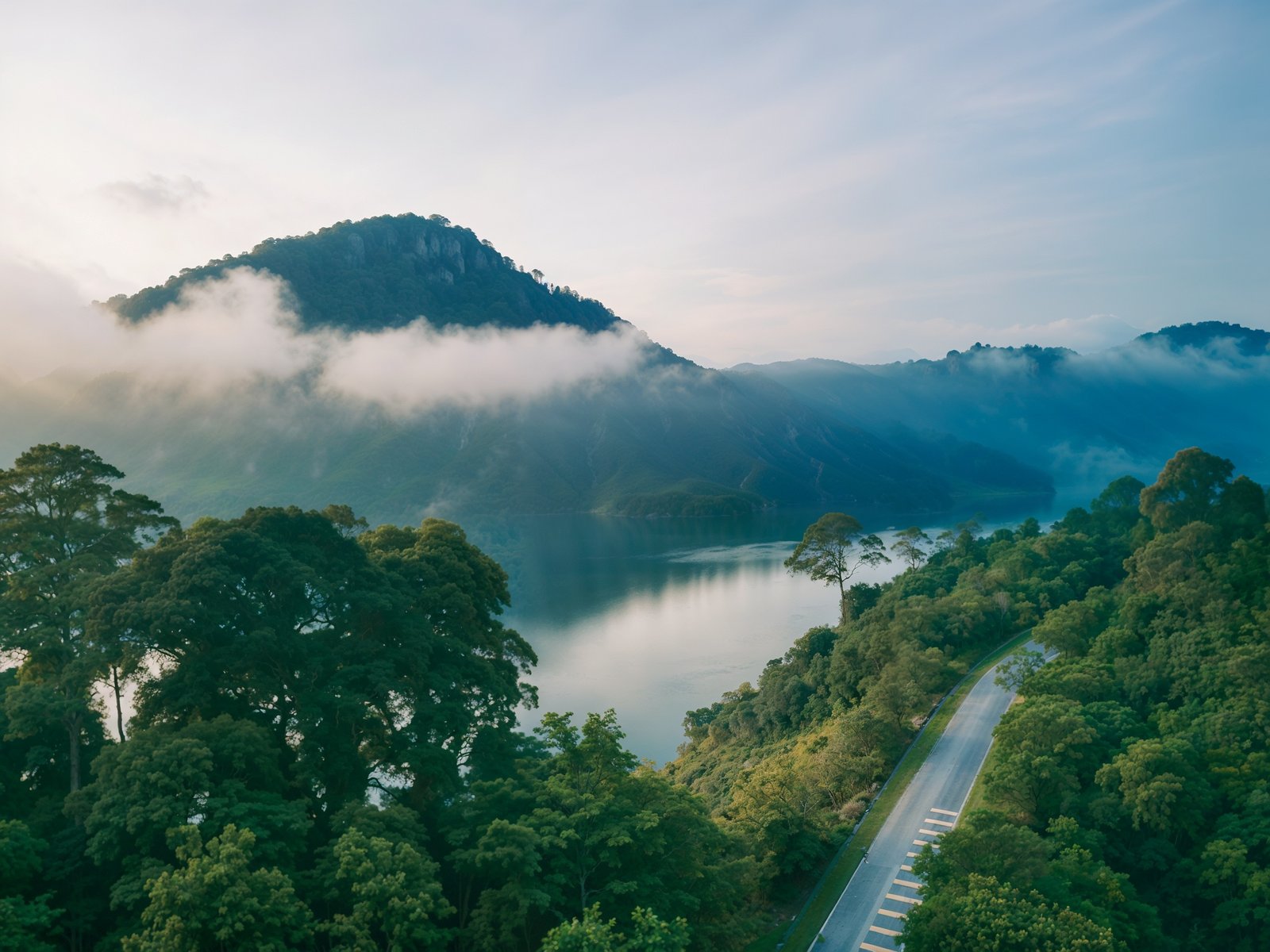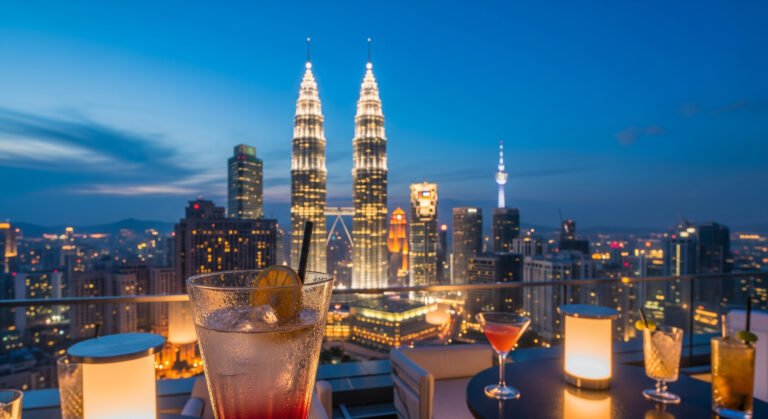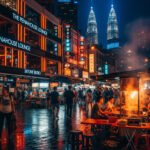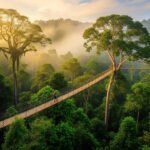Picture this: You’re standing on the pristine shores of Langkawi, watching the sunset paint the sky in brilliant oranges and pinks, when suddenly – splash! – a tropical downpour soaks you to the bone. Sound familiar? Here’s what I learned from my first Malaysia trip: timing is everything in this beautiful Southeast Asian gem.
After countless visits to Malaysia over the past decade, I’ve discovered that the best time to visit Malaysia isn’t just one simple answer – it depends entirely on where you’re going and what you want to experience. In this comprehensive Malaysia climate guide, I’ll share everything you need to know to plan your perfect Malaysian adventure, from dodging monsoon rains to catching the most spectacular festivals.
Understanding Malaysia’s Complex Climate
Malaysia’s weather might seem confusing at first glance, but once you understand the patterns, it becomes much clearer. The country experiences a tropical monsoon climate with two distinct monsoon seasons that affect different regions at different times.
The Two-Coast System
Here’s where it gets interesting – and why most travel guides give you conflicting advice about Malaysia’s best month to visit. Malaysia’s peninsular region has two distinct coastal areas:
East Coast (Terengganu, Pahang, Kelantan):
- Monsoon season: November to February
- Dry season: March to October
West Coast (Penang, Selangor, Negeri Sembilan):
- Wet season: April to October
- Dry season: November to March
You might wonder why this matters so much. Well, during the east coast’s monsoon season, many islands like Perhentian, Tioman, and Redang literally shut down – no ferries, closed resorts, and rough seas that would make even seasoned sailors queasy.
Best Time to Visit Malaysia: The Complete Breakdown
Peak Season (December to March)
Malaysia tourism weather is at its most predictable during these months, making it the most popular time for international visitors.
Why it’s great:
- West coast enjoys sunny, dry weather
- Perfect for Langkawi, Penang, and Kuala Lumpur
- Lower humidity levels
- Ideal for first-time visitors
What to expect:
- Higher accommodation prices
- Crowded popular destinations
- More expensive flights
- Festival season (Chinese New Year, Deepavali)
In my experience, this is when Malaysia truly shines on the west coast. I’ll never forget spending New Year’s Eve 2019 in George Town, Penang – the weather was absolutely perfect, with clear skies and comfortable temperatures around 28°C (82°F).
Shoulder Season (March to May & September to November)
These months offer some of the best value for Malaysia vacation planning, with decent weather and fewer crowds.
March to May:
- Transition period with occasional showers
- East coast opens up for beach activities
- Great for island hopping on the east coast
- Moderate prices and crowds
September to November:
- End of wet season on west coast
- Perfect time for Malaysian Borneo
- Cultural festivals like Deepavali and Hari Raya
- Good balance of weather and affordability
Monsoon Season Strategies
Don’t let the Malaysia monsoon season scare you away completely. Here’s what I’ve learned from traveling during these months:
East Coast Monsoon (November-February):
- Focus on west coast destinations
- Explore Kuala Lumpur, Penang, Langkawi
- Perfect time for cultural experiences
- Significantly cheaper accommodation on east coast (if you can find open places)
West Coast Wet Season (April-October):
- Head to east coast islands
- Enjoy pristine beaches with fewer crowds
- Best diving and snorkeling conditions
- Mountain destinations like Cameron Highlands have cooler, refreshing weather
Month-by-Month Malaysia Weather Guide
January – February: Peak Dry Season
- Temperature: 24-32°C (75-90°F)
- Rainfall: Low on west coast, high on east coast
- Best for: Langkawi, Penang, KL, cultural tours
- Avoid: East coast islands (closed/limited services)
March – April: Transition Magic
- Temperature: 25-33°C (77-91°F)
- Rainfall: Moderate with brief afternoon showers
- Best for: Nationwide travel, shoulder season prices
- Perfect for: Island hopping as east coast reopens
May – June: East Coast Paradise
- Temperature: 26-34°C (79-93°F)
- Rainfall: Dry on east coast, wet season begins on west
- Best for: Perhentian Islands, Tioman, Redang
- Tip: Book east coast accommodations early as they fill up quickly
July – August: Split Season
- Temperature: 26-33°C (79-91°F)
- Rainfall: Heavy on west coast, perfect on east coast
- Best for: East coast beaches, highland retreats
- Note: School holidays mean higher domestic tourism
September – October: Borneo’s Best
- Temperature: 25-32°C (77-90°F)
- Rainfall: Decreasing on west coast
- Best for: Malaysian Borneo, cultural experiences
- Highlight: Excellent wildlife viewing in Borneo
November – December: Festival Season
- Temperature: 24-31°C (75-88°F)
- Rainfall: Increasing on east coast
- Best for: West coast destinations, cultural festivals
- Peak season: Higher prices and crowds
Regional Destinations: When to Go Where
Kuala Lumpur & Selangor
Best months: December to February, June to August The capital region can be visited year-round, but these months offer the most comfortable weather for sightseeing. The city’s excellent shopping malls and covered attractions make it rain-proof anyway!
Penang
Best months: December to March George Town’s UNESCO World Heritage sites are best explored during the dry season. I spent a week here in February 2020, and every day was perfect for walking tours and food hunting.
Langkawi
Best months: November to April This duty-free island paradise enjoys its driest weather during these months. The cable car to Mount Mat Cincang offers stunning views when skies are clear.
East Coast Islands (Perhentian, Tioman, Redang)
Best months: March to September These islands quite literally shut down during monsoon season. April to June offers the best balance of good weather and reasonable prices.
Malaysian Borneo (Sabah & Sarawak)
Best months: March to October While Borneo can be visited year-round, these months offer the best wildlife viewing opportunities and more predictable weather patterns.
Cameron Highlands
Best months: Year-round (with preferences) This hill station offers a cool retreat from tropical heat anytime, but March to May and September to November provide the most comfortable conditions for hiking and tea plantation visits.
Practical Malaysia Travel Tips for Every Season
Packing Essentials
Dry season must-haves:
- Lightweight, breathable clothing
- Strong sunscreen (SPF 30+)
- Insect repellent
- Comfortable walking shoes
- Light rain jacket (for afternoon showers)
Monsoon season necessities:
- Waterproof jacket and pants
- Quick-dry clothing
- Waterproof phone case
- Sturdy umbrella
- Extra plastic bags for wet clothes
Budget Considerations
Peak season (Dec-Mar): Expect 30-50% higher prices Shoulder season (Mar-May, Sep-Nov): Best value with 20-30% savings Monsoon season: Significant discounts but limited services in affected areas
Booking Strategy
Based on my travel experiences, here’s what works:
- Book accommodations 2-3 months ahead for peak season
- East coast island resorts: Book immediately when they open (usually March)
- Flights: Best deals found 6-8 weeks in advance
- Domestic travel: Book closer to dates for better deals
Festivals and Events Calendar
Chinese New Year (January/February)
The most significant celebration in Malaysia, with elaborate decorations, lion dances, and family gatherings. Cities like Kuala Lumpur and George Town come alive with festivities.
Hari Raya Aidilfitri (Dates vary)
Malaysia’s most important Islamic festival, marking the end of Ramadan. It’s a time of forgiveness, family reunions, and incredible food.
Deepavali (October/November)
The Hindu festival of lights transforms Little India districts into magical wonderlands of color and light.
Malaysia Day (September 16)
National holiday celebrating the formation of Malaysia, with parades and cultural performances nationwide.
Special Considerations for Different Travelers
Beach Lovers
East Coast enthusiasts: Visit March to September West Coast fans: November to April is your window Island hoppers: Plan split itineraries to catch both coasts at their best
Culture Seekers
Best months: November to February Cooler temperatures make temple visits and walking tours more comfortable. Festival season adds extra cultural richness.
Adventure Travelers
Trekking and hiking: March to May, September to November Diving and snorkeling: Depends on location – east coast (Mar-Sep), west coast (Nov-Apr) Wildlife watching: March to October for Borneo
Budget Travelers
Sweet spot: March to May, September to November Avoid peak season premiums while still enjoying decent weather.
Common Malaysia Weather Mistakes to Avoid
From my years of travel experience, here are the biggest mistakes I see travelers make:
- Assuming “dry season” means no rain: Malaysia is tropical – expect brief afternoon showers year-round
- Booking east coast islands during monsoon: Many simply close down
- Underestimating humidity: It’s not just about temperature – 80%+ humidity is the norm
- Ignoring local festivals: They can significantly impact prices and availability
- Over-packing for weather: You can buy anything you need locally
Making the Most of Malaysia’s Weather
Rainy Day Activities
- Explore world-class shopping malls in KL
- Visit museums and cultural centers
- Experience local food courts and hawker centers
- Enjoy spa treatments and wellness centers
- Take cooking classes
Hot Weather Strategies
- Plan outdoor activities for early morning or late afternoon
- Stay hydrated with fresh coconut water
- Take advantage of air-conditioned spaces during peak heat
- Use public transportation with AC when possible
Conclusion: Your Perfect Malaysia Adventure Awaits
After all my travels through Malaysia, here’s what I’ve learned: there’s no single “perfect” time to visit this incredible country. The best time to visit Malaysia depends entirely on your priorities, budget, and which regions you want to explore.
For first-time visitors, I’d recommend December to March for the west coast, or March to June for a mix of both coasts. If you’re budget-conscious, shoulder seasons offer fantastic value. And if you’re flexible? Take advantage of Malaysia’s unique geography – when it’s raining on one coast, it’s probably sunny on the other!
Remember, Malaysia weather might be predictable in patterns, but it’s always full of surprises. Pack light, stay flexible, and embrace the tropical adventure that awaits you in this incredible Southeast Asian paradise.
Planning your Malaysia trip? I’d love to hear about your travel dates and destinations in the comments below. And don’t forget to check out my detailed guides on specific Malaysian destinations for more insider tips!
Have you experienced Malaysia’s weather firsthand? Share your stories and tips in the comments – I’m always learning from fellow travelers!








